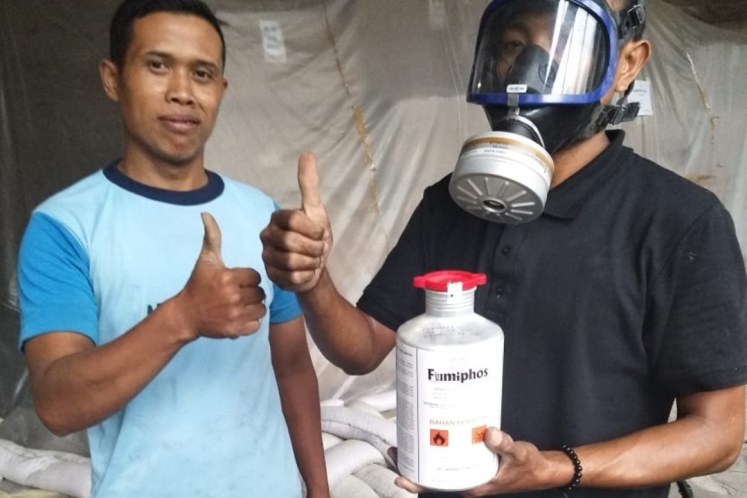 FUMIPHOS tablets are used to protect stored commodities from damage by insects or pest. This is the best tablet phosphine fumigant especially for grain fumigation.
FUMIPHOS tablets are used to protect stored commodities from damage by insects or pest. This is the best tablet phosphine fumigant especially for grain fumigation.
FUMIPHOS® tablets are used to protect stored commodities from damage by insects or pests or we may shorten it as a term of grain fumigation or phosphine fumigation. In limited areas, applications of FUMIPHOS® may be made to control burrowing vertebrate pests. The use of this product is strictly prohibited on single and multi-family residential properties and nursing homes, schools (except athletic fields), daycare facilities and hospitals. For a list of approved sites see other article. FUMIPHOS® metal phosphide fumigants are acted upon by atmospheric moisture to produce phosphine gas. FUMIPHOS® tablets contain aluminum phosphide (AlP) as their active ingredient and will liberate phosphine via the following chemical reaction: AlP + 3H2O ---> Al(OH)3 + PH3.
Phosphine gas is highly toxic to insects, burrowing pests, humans, and other forms of animal life. In addition to its toxic properties, the gas will corrode certain metals and may ignite spontaneously in air at concentrations above its lower flammable limit of 1.8% v/v (18,000 ppm). These hazards will be described in greater detail later on in other article. FUMIPHOS® also contains ammonium carbamate which liberates ammonia and carbon dioxide as follows: NH2C00NH4 ---> 2NH3 + CO2 These gases are essentially non-flammable and act as inerting agents to reduce fire hazards.
FUMIPHOS® is prepared in one spherical shapes. The rounded tablets weigh approximately 3 grams and will release 1 gram of phosphine gas. They are about 16mm in diameter. FUMIPHOS® Tablets are provided in 21kg cases containing 14 gastight flasks of 500 tablets each. These flasks are constructed to conform to UN and DOT packaging standards.
Upon exposure to air, FUMIPHOS® tablets begin to react with atmospheric moisture to produce small quantities of phosphine gas. These reactions start slowly, gradually accelerates and then tapers off again as the aluminum phosphide is spent. The rates of decomposition of the tablets will vary depending upon moisture and temperature conditions. For example, when moisture and temperature of the fumigated commodity are high, decomposition of FUMIPHOS® may be complete in less than 3 days. However, at lower ambient temperatures and humidity levels, decomposition of FUMIPHOS® may require 5 days or more.
After decomposition, FUMIPHOS® leaves a gray-white powder composed almost entirely of aluminum hydroxide and other inert ingredients. This will cause no problems if the fumigant has been added directly to a commodity such as grain. However, the spent powder must be retrieved for disposal after space fumigations. If properly exposed, the spent FUMIPHOS® will normally contain only a small amount of unreacted aluminum phosphide and may be disposed of without hazard. While spent FUMIPHOS® is not considered a hazardous waste, partially spent residual dusts from incompletely exposed FUMIPHOS® will require special care.
Precautions and instructions for further deactivation and disposal will be given on other article. FUMIPHOS® tablets are supplied in gas-tight containers and their shelf life is unlimited as long as the aluminum seal is not removed. Once opened for fumigation, the aluminum flasks of tablets or pellets should be used completely. Storage and handling instructions will be given in detail in other article.
FUMIPHOS® is officially registered on Indonesia Ministry of Agriculture. The effect of FUMIPHOS® for resistent pest (Lasioderma serricorne etc) has been testified in Biotrop, Bogor, Indonesia and Indonesia Tobacco Institution, and the result shows that stability of phosphine gas (PH3) in first day is good above 200 ppm, FUMIPHOS® has the highest efficiency rate of grain fumigation compared from price and quality aspect to Phostoxin, and residue amount of gray white powder is not detected on tobacco leaves. This certified result of test shall be supplied if needed by customer.